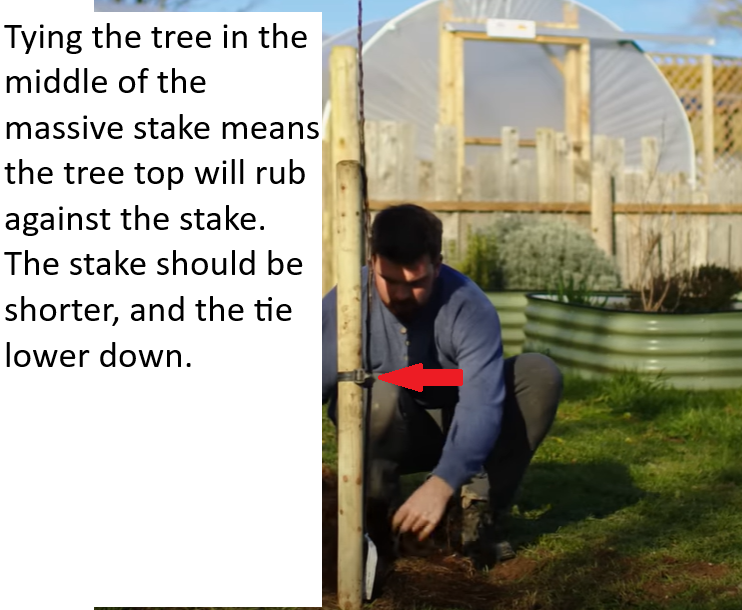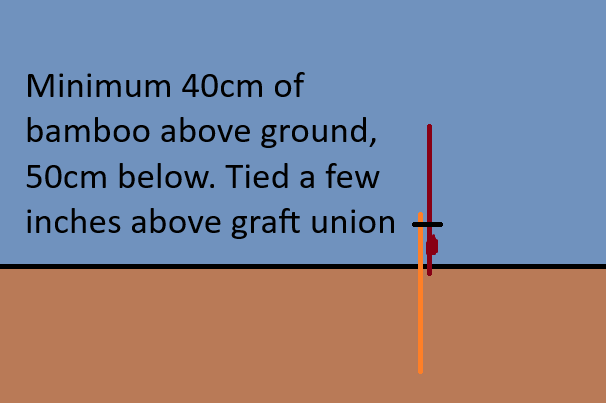Picking on Huw Richards Inspires Us to Make Better Tree Planting Videos
At Ashridge, we feel a bit responsible for how well people plant trees.
We are not the the Huw Richards police; we would never pick on him because he is YouTube famous and we want some of that.
We totally agree with his main premise in this video: don’t bother adding compost to the planting hole. Rather, mulch well forever after.
But in the name of sober shopping online, does that full size tree support stake, which costs a fiver, look like an appropriate size for that little maiden fruit tree?

Honestly, it won’t anchor the tree any better than a 90cm bamboo cane, which costs less than 30p: a bigger cane is better, longer-lasting, but not essential.
Having a big stake that tall for a small fruit tree is overkill, unless it’s supporting a really big tree guard, maybe, but no, it’s huge.

Whether you use a big stake or a bamboo cane, you don’t need to tie a tree stiff as a post like Huw does above.
You really aren’t holding the tree trunk up, you are mainly staking in order to prevent the roots from being rocked by wind in years 1 & 2.
With the roots all set, the trunk can grow well unsupported.
By year 3’s early Autumn winds, the roots should be deep enough to stand on their own, and the bamboo underground will have rotten.

In the diagram, most of the fruit tree’s trunk is clear above the support stake / bamboo.
It’s free to wave in the wind without bumping into its support.
That is a good thing: flexing of the trunk makes the wood hunkier.
Note that the tie should be several inches above the graft, not on or right above it.
But I Am Growing In A Very Windy Location
If you are growing trees in a wind blasted, exposed location, you are already a specialist in the challenges. People go for different wind management strategies, double staking is a popular one.
OK That’s a Small Maiden Tree, What About A Bigger Half-Standard or Bush Size Tree?
If you were to plant a tree in a sheltered courtyard with no support, it should be fine: if no one jumps on it.
The support stake is there to protect the tree from strong winds and a degree of human or animal bumping, for the first couple of years.
The stake not only could, but ideally should come off in the third year, unless there was a problem.
Strong winds hit most, but not all, gardens.
Therefore, we recommend that most people plant trees in larger sizes with a stake, most of the time, and yes, we are literally selling them.
